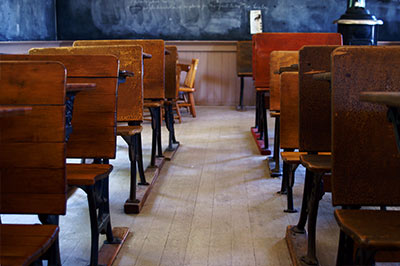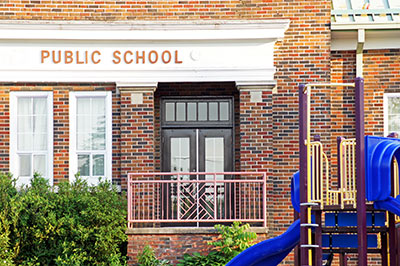Glen I. Earthman, 2002. School building design features and components have been proven to have a measurable influence upon student learning. Among the influential features and components are those impacting temperature, lighting, acoustics and age. Researchers have found a negative influence upon student performance in buildings where deficiencies in any of these features exist.
Tag: Academic Achievement
The Impact of School Building Age on the Academic Achievement of Eighth Grade Pupils from the Public Schools in State of Georgia
Dissertation by Tak Cheung Chan (1979). This study was designed to investigate the relationship of school building age and the academic achievement of pupils taught within school buildings of varying age. The population consisted of all of the standard public schools in the State of Georgia containing eighth grade pupils in 1975-76.
Does School Size Effect Students’ Academic Outcomes?
Tanner, C. K., & West, D. (2011). 2 (1)
Does the size of a school’s student population influence academic achievement levels among its students? Evolving from the “smaller is better” discussions and emergent theory on educational outcomes and school size, this question guided a study of 303 Georgia high schools to determine if the total high school population or school size influenced students’ outcomes defined in terms of test scores and graduation rates. Based upon the findings of this study, school size played no significant importance in students’ academic achievement. Therefore, regarding Georgia high schools, the size of the student population (school size) has little to no impact on academic achievement or graduation rates. This conclusion, however, may complement the arguments and developing theory that there is a point of maximum benefit or achievement levels in curvilinear measures of school size as compared to student outcomes and economy of scale.
How Does Indoor Air Quality Impact Student Health and Academic Performance?
Environmental Protection Agency (2010).
Substandard environmental conditions in schools, such as insufficient cleaning or inadequate ventilation, can cause serious health problems for children. Evidence continues to mount demonstrating that indoor air quality, or IAQ, directly impacts student academic performance and health.1,2 IAQ refers to those characteristics of the air in indoor environments that impact the occupants’ health, comfort and ability to perform. Taking steps to improve the IAQ of schools is critical to bettering student health and academic performance.
Building for Academic Excellence – A Vision and Options to Address Deficient School Facilities in Baltimore City
American Civil Liberties Union of Maryland (2010).
This report, Buildings for Academic Excellence, urgently asks city, state, and federal officials, and the greater Baltimore community, to act now to improve the substandard physical condition of city school buildings. It is unacceptable - as well as unconstitutional - to deprive city students of adequate school facilities and an equal opportunity in education. The modernization of school buildings is integral to Baltimore’s education reform effort. To help both students and teachers succeed, state and city leaders must make school facility improvements a higher priority.
http://www.abell.org/pubsitems/Buildings_for_Academic_Excellence_ACLU_060210.pdf
6 Design Principles to Set the Stage for Learning
O'Donnell, S. (2008).
Learning environments provide students with a 'stage' to perform. The article provides six recommendations to set the stage for learning. Different classroom environments have shown to positively affect activities in classrooms.
A High Performance School Case Study – Northern Guilford Middle School
Koh, B., & Nicklas, M. (2007).
This case study will introduce detailed information of each green strategy, for Northern Guilford Middle School, and how comprehensive strategies are well integrated into the project to stay within the budget.
A High Performance School Case Study -- Northern Guilford Middle School
Achievement by Design
Black, S. (2007).
Buildings and classrooms play a role in how students learn, but while amenities are nice, don't let the frills overshadow your district's instructional goals.
The relationship of school facilities condition to selected student academic outcomes – A study of South Carolina public schools
South Carolina Education Oversight Committee Stevenson, K. R. (2001).
This research project sought to determine if a relationship exists between school academic outcomes and school facilities characteristics. To address this issue, data were gathered from a variety of sources including research literature, state data files, principal questionnaires, and focus groups.
Stevenson_The Relationship of School Facilities Condition To Selected Student Academic










